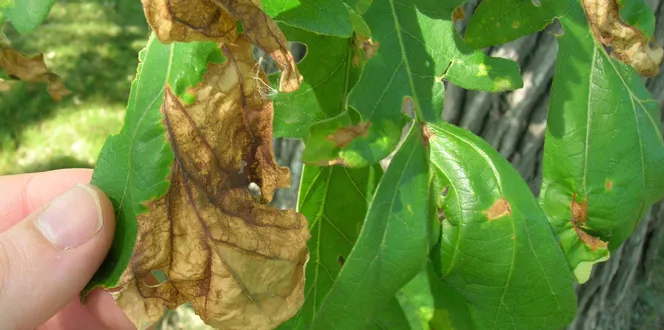Pine trees are great evergreen options for your home landscape.
They remain green all year long and can add great texture, scent, and privacy to your yard – not to mention great beauty.
But as with any tree, you have to consider more than just how tall and wide the tree will get. You have to also think about how far below ground its growth might extend. This is especially important if your tree is planted close to your house.
While it’s always wise to plant trees about 15 feet away from your house, sometimes you are in a situation where you purchased a home with existing mature trees. Then you have to assess how that tree’s continued growth may impact your home. When you see tree roots growing close to your house, you might question, “Is it OK to cut exposed tree roots?”
Let’s look at roots and their impact on your home foundation and whether or not cutting them is a good idea.
How Far Do Pine Roots Spread?
As you stare up at your tall, thick pine tree, you might be wondering how far its roots actually spread.
Your tree’s roots can extend as far as 2 to 3 times the width of its drip line. In other words, the dripline is the farthest point from the tree where foliage is growing.
Will Pine Tree Roots Damage A Foundation?
While pine roots are not known for having invasive root systems, if the soil is dry, the roots will go to where the water is.
Still, most roots grow in that top foot of the soil surface, which can certainly change a bit for different soil types, such as clay versus sandy soil or even compacted soil. But, mostly, tree roots typically grow outward versus downward.
If you have downspouts, ensuring water moves far away from your foundation can help encourage root growth away from your home. Deep watering versus shallow watering can also encourage root growth downward.
Will Pine Tree Roots Damage Sidewalks?
Tree roots grow where soil resources are most favorable for growth.
The further a tree is away from a sidewalk, the less likely it is to cause a problem.
Can You Cut Pine Tree Roots That Are Above Ground
If you see some of your tree roots above ground that are dangerously close to your home foundation, you might be wondering, “Can you cut pine tree roots?”
This answer depends on quite a few factors, especially the size and location of the tree’s roots.
First of all, you should never remove tree roots unless they are damaging or infringing on a nearby structure.
You should only prune tree roots approaching your foundation that are less than 2 inches wide within a radius of five times the stem diameter from the base of the tree as a general guideline. Outside of this radius, larger roots can be cut, but only on one side of the tree if needed. Additionally, you should know that removing large tree roots can make the tree unstable or unhealthy at some point because you could also be cutting off some of its nutrients and water supply.
When it concerns roots near the trunk of your tree, these are most critical to its structure, so it’s best to avoid cutting those.
The goal is never to remove more than 15% of above-ground tree roots at any one time. It will take your tree 2 to 3 years to recover from this root pruning, so you should not cut any further roots until after this timeframe if at all.
Root pruning is a very specialized tree care practice. For best guidance and results, consult with your local certified arborist before removing tree roots.
How To Prevent Damage From Invasive Root System
There are a couple of ways to prevent damage from your tree’s root system so you never have to wonder, “Is it OK to cut exposed tree roots?”
First, if you’re planting a pine tree, you want to choose the right one. The root systems of pine trees vary based on the species and soil type.
While most pine species have deep taproots, mugo pines don’t. And larger species, such as a 100- to 150-foot white pine, can have more extensive roots compared to dwarf varieties.
In different soils, roots may grow differently as well. In sandy soils, pine trees can develop multiple layers of roots.
Second, you want to choose the right planting location. If you have a solid and deep home foundation, a pine tree root might make contact with it, but it may not cause damage unless your foundation gives it a way in with cracks or a shallow depth. If anything, your foundation can limit your tree’s root growth. For that reason, picking the right location that is not too near to your home – especially when taking into account your tree species and future growth plans – is important. Research how large a tree will get before planting and avoid having a tree where it will ever grow to be within five times its stem diameter to the house foundation.
Third, root barriers can be installed to prevent roots from ever reaching the foundation. Install them vertically in a trench between trees and the foundation. Root barriers that contain chemical inhibitors, such as copper, but allow for movement of air and water are ideal. The foundation itself can also be sealed and treated.





